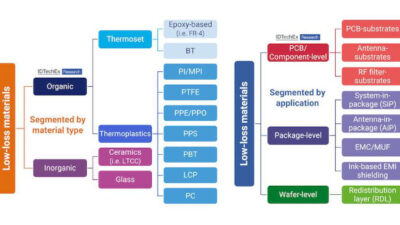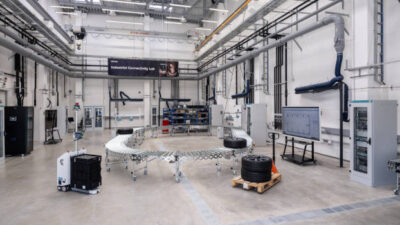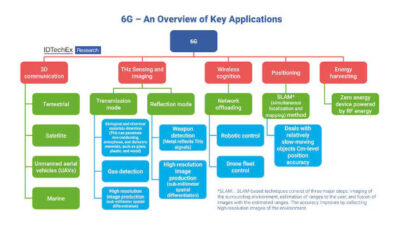During the design process it is imperative to relay the sensory requirements to the mechanical designers to ensure consistent, accurate, error-free control of our automated equipment.

Control engineers, original equipment manufacturers, machine designers, and system integrator look for consistent, accurate, error-free control of automated equipment. They want feedback loops that provide perfect, real-time vision of every detail of processes. They seek position sensors that will tell, to within a nanometer, where things are. And in all of this, the obvious can be lost. Instruments and actuators can be no more accurate or consistent than the physical, mechanical systems to which they are attached. Sometimes the root cause of control system errors can be structural rather than the connected automation.
When a proximity sensor is attached to a frame, for example, any variations in position of the frame will automatically translate into the proximity reading. Every load applied to the frame (such as internal forces from actuators; vibrations from motors or pumps; loads from process materials passing through, on, or over; or external loads from operators or maintenance staff leaning on the equipment) will create a strain on the structure of the equipment. During the design process it is imperative to relay the sensory requirements to the mechanical designers. Mechanical engineers can then design the framework of the system to accommodate the required rigidity to allow sensor accuracy and repeatability.
One of the simplest and most economical ways to ensure structural rigidity is simply to size up on frame parts. Doing a quick financial audit on past projects will show that the raw material costs were a very small fraction of total project costs. As such, sizing up from a 2 x 2 x 0.187-in. hollow structural section (HSS) tube to a 3 x 3 x 0.25-in. HSS will result in a sizable increase in raw material cost, but a miniscule increase in overall project cost. The second area increase from that change is nearly fivefold. Taking a basic cantilever beam seen in Figure 1 for an example, with the formula for tip displacement X as:
With I being the second moment of area and E the Young’s modulus, up-sizing will reduce the deflection proportionally, in this case by five times. With the increased stiffness, however, the natural frequency increases. The mass doubles, but the stiffness increases far more.
A 3-ft-long, 2 x 2 x 0.187-in. HSS tube with an applied tip force of 200 lb (human leaning on it) will have a deflection of about 0.05 in. The 3 x 3 x 1/4-in. will deflect only 10 thousandths of an inch. That does not sound like much, but if a proximity sensor were located on the end of that beam measuring to a tolerance of 1/32 in. or 0.031 in., the system would be so far out of compliance that every part produced would be rejected. Slides, servos, conveyors, and other items based on the F = mA formula can exert far more than a 200-lb force on structural members.
In this next step, based on Figure 2, an undamped system with C = 0 would generate the function for the natural frequency of the system:
A fivefold increase in the stiffness K, with a corresponding doubling of the mass M, will render an increase in the natural frequency of 2.5 times. Viscous damping force Fd in the system would be expressed as:
Where C is a constant of proportionality, the equation of motion in response to applied force F0 becomes:
The oscillatory motion X then can be expressed by:
And the phase angle Φ can be found by:
Based on the natural frequency described in (1), critical damping frequency Cc can be established as:
And the damping factor ζ then becomes:
With this, the non-dimensional expression for the phase amplitude is written as:
This indicates that both the non-dimensional amplitude, , and the phase angle, Φ, are functions of the frequency ratio ω/ωn. For situations where <<1.0, Φ becomes 180⁰, and the impressed force is expended in overcoming the large inertia force of the mass, M, we can then calculate the resonance amplitude simply as:
This exercise demonstrates a very important point. By graphing the non-dimensional amplitude against the frequency ratio ω/ωn an interesting characteristic becomes apparent. When maintaining a frequency ratio above 3, the amplitude does not increase. If, however, the amplitude falls to below 2, resonance occurs and the amplitude, the physical motion X, will increase exponentially towards a ω/ωn value maximum of 1.
This was a long road to show the value of increasing mass and stiffness. As systems are stiffened to reduce the amplitude of deflection from implied forces (which increases the reliability of feedback control), an unintended consequence is an increase in the natural resonant frequency. It is possible to reduce the initial deflections from applied forces only to have resonance amplitudes increase in orders of magnitude. A cyclical slide action could then produce a driving frequency ω that could lower the ratio into a dangerous range. As such, it is work considering an increase in the overall weight of the system. This can be done by using thicker bolster plates and brackets. Once again the material cost comparison is higher, yet the overall cost increase is a small percentage of total project cost.
Many will have danced over the math here, and that is OK. (Some will notice that a few steps were left out of the derivations for brevity.) The message is that control and feedback accuracy and consistency can never be higher than what the mechanical design allows for. It is imperative that process engineers, programmers, and electrical engineers communicate their needs to the mechanical engineers ahead of time. If there’s a need for a 0.005-in. accuracy on a proximity sensor, then that better be made known in advance. If a slide generates 500 ft-lb, oscillating twice a second, then the mechanical engineer involved needs to know that ahead of time as well.
Plan on robust, accurate, consistent control and feedback by planning for a strong, robust mechanical system to attach it to. You simply cannot get one without the other.
– Paul Brake specializes in machine design with an emphasis on the water and wastewater industries. He is listed as inventor for membrane bio-reactor patents in Canada and the United States. Edited by Joy Chang, digital project manager, Control Engineering, [email protected].
ONLINE
See related articles linked below.
Key Concepts
- Instruments and actuators can be no more accurate or consistent than the physical, mechanical systems they are attached to.
- During the design process it is imperative to relay the sensory requirements to the mechanical designers.
- One of the simplest and most economical ways to ensure structural rigidity is to increase the size of frame parts.
Consider this
During your project, did the process engineers, programmers, and electrical engineers communicate their needs to the mechanical engineers ahead of time?



